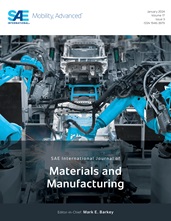Selective inhibition sintering (SIS) results in easy, flexible, fast, and cost-efficient fabrication of functional parts by using powder material for various applications. The functional part is important for operational examination by fabricating the part unswervingly from computer-aided design (CAD) data. However, poor surface quality is the major disadvantage in the SIS procedure. The selection procedure of optimal operating parameters plays a major role in the fabrication of end products. The present study discusses the effect of key contributing operating parameters on the surface quality of the polyamide parts fabricated by the SIS process. Parameters like heater power (HP), layer thickness (LT), heater feed rate (HFR), machine feed rate (MFR), and bed temperature (BT) were considered in this study. In this work, experiments were performed rendering the response surface modeling (RSM) strategy for different combinations of operating parameters, and optimal parameters with good responses were decided through the analysis of variance (ANOVA) approach. Further, optimized process parameters are validated by conducting experimental tests. Moreover, to decide the survival rate of the SIS parts for industrial applications, the surface roughness reliability with higher error (>5%) was tested by using Weibull statistics. It was observed that HP, LT, and HFR are contributing more to increase surface roughness.
